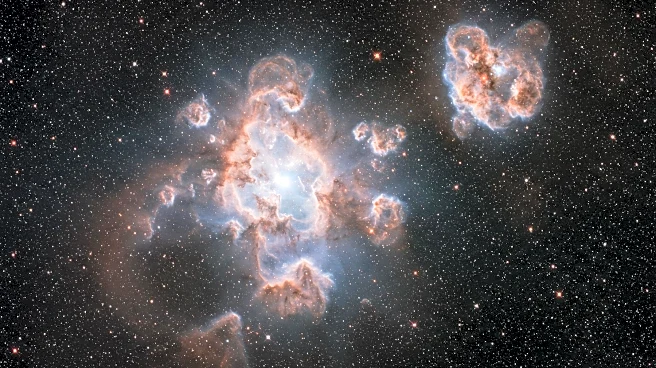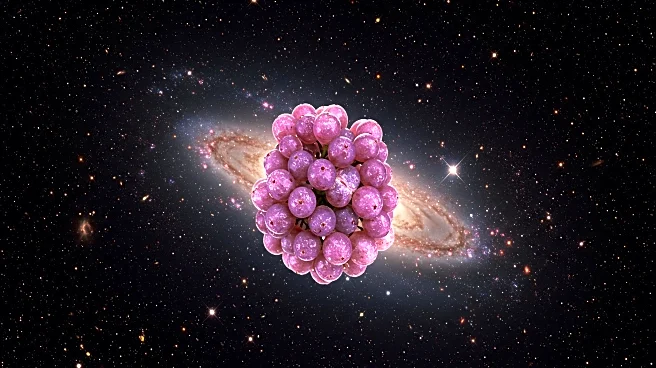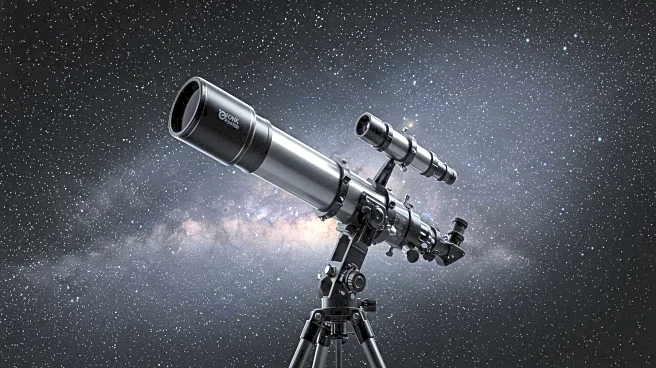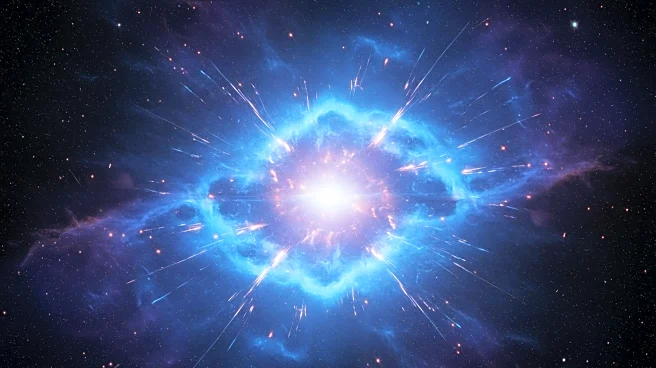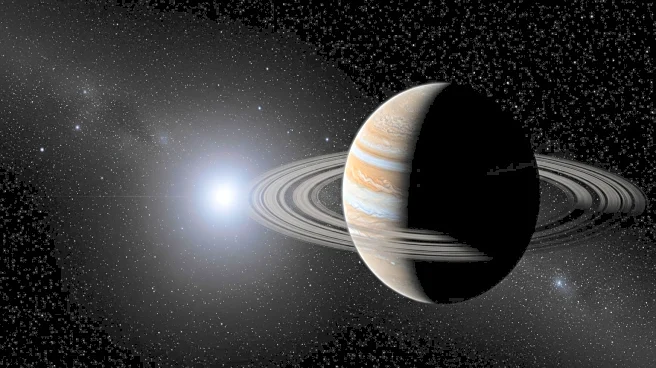Rapid Read • 7 min read
Astronomers have discovered a distant galaxy, nicknamed 'Cosmic Grapes,' which appears to have more than a dozen tightly packed star-forming clumps arranged like a bunch of grapes. This galaxy, formed just 930 million years after the Big Bang, challenges previous assumptions about early galaxy growth. Using NASA's James Webb Space Telescope (JWST) and the Atacama Large Millimeter/submillimeter Array (ALMA), researchers observed the galaxy through gravitational lensing, revealing its internal structure and massive clumps of dense gas primed for star formation. The discovery reshapes our understanding of early galaxy growth by revealing the connection between a galaxy's small internal structures and its overall rotation.
AD
The discovery of the 'Cosmic Grapes' galaxy provides new insights into the formation and evolution of galaxies in the early universe. It suggests that many seemingly smooth galaxies may actually contain hidden star-forming clumps, challenging existing models of galaxy growth. This research enhances our understanding of cosmic evolution and the processes that shape galaxies, contributing to the broader field of astrophysics. The findings highlight the importance of advanced telescopes and techniques in uncovering the complexities of the universe.
Astronomers will continue to study the 'Cosmic Grapes' galaxy and similar objects to explore the prevalence and impact of star-forming clumps in early galaxies. Future research may focus on the role of gravitational lensing in revealing hidden structures and the implications for galaxy formation theories. This could lead to a deeper understanding of the universe's evolution and the factors influencing galaxy growth.
The discovery prompts reflection on the philosophical and existential questions surrounding our understanding of the universe. It challenges us to consider the limits of human knowledge and the potential for new discoveries to reshape our perception of cosmic origins.
AD
More Stories You Might Enjoy
